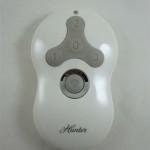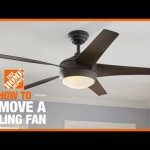What Bulb For Ceiling Light: Essential Aspects to Consider
Ceiling lights are ubiquitous fixtures in our homes, offices, and other indoor spaces. Choosing the right bulb for a ceiling light is crucial for achieving optimal illumination and creating the desired ambiance. Several essential aspects come into play when selecting a ceiling light bulb, each contributing to the overall functionality and aesthetic appeal of the space.
This article delves into the key considerations for selecting the ideal bulb for your ceiling light. We will explore factors such as light output, color temperature, energy efficiency, beam angle, and bulb shape. By understanding these aspects, you can make an informed decision that meets your specific lighting needs and preferences.
Light Output (Lumens)
Light output is measured in lumens and represents the amount of light emitted by the bulb. For ceiling lights, it is important to select a bulb that provides adequate illumination for the space. Higher lumen output bulbs are suitable for larger rooms or areas with higher ceilings, while lower lumen output bulbs are ideal for smaller spaces or ambient lighting.
Color Temperature (Kelvin)
Color temperature refers to the warmth or coolness of the light emitted by the bulb. It is measured in degrees Kelvin (K). Warm white bulbs (2700K-3000K) create a cozy and inviting atmosphere, while cool white bulbs (4000K-5000K) provide a more energizing and brighter light. Daylight bulbs (5000K-6500K) simulate natural sunlight and are suitable for tasks requiring accurate color rendering.
Energy Efficiency
Energy efficiency is a crucial consideration for both environmental and financial reasons. Energy-efficient bulbs, such as LED or CFL bulbs, consume less energy while producing the same or even higher light output compared to traditional incandescent bulbs. This can result in significant savings on energy bills over time.
Beam Angle
Beam angle refers to the angle at which the light is distributed from the bulb. Narrow beam angle bulbs concentrate the light in a specific direction, creating a focused spot effect. Wide beam angle bulbs spread the light over a larger area, providing more diffuse and ambient illumination.
Bulb Shape
Ceiling lights come in a variety of shapes, each with its own unique aesthetic appeal. Common bulb shapes include A19 (standard), BR30 (floodlight), and GU10 (spot). Consider the size and shape of your ceiling light fixture when choosing a bulb to ensure a proper fit.

Feit Electric 60 Watt Equivalent A15 E12 Candelabra Dimmable Cec Clear Glass Led Ceiling Fan Light Bulb In Daylight 2 Pack Bpa1560c 950cafil2 The Home Depot

The New Look In Ceiling Lights Hanging Light Bulb Fixtures Ideas Advice Lamps Plus

Minimalist Light Fixture Edison Bulb Flush Mount Ceiling

Ez Shade Clip On Bulb Cover White Ceiling Light Com

Lighting Guide How To Choose The Right Light Bulb For Each Lamp

Lepro 24w 13 Inch Led Flush Mount Ceiling Light Fixture For Kitchen Bathroom Bedroom Porch Hallway Non Dimmable

Ez Shade Clip On Bulb Cover White Ceiling Light Com

Lighting Guide How To Choose The Right Light Bulb For Each Lamp

Yansun 1 Light Black Socket Rope Lamp Pendant Vintage Industrial Ceiling For Bedrooms Kitchens Hallways H Pl050m1e26 The Home Depot

Wafer Lights Vs Can Everything You Should Know
Related Posts








